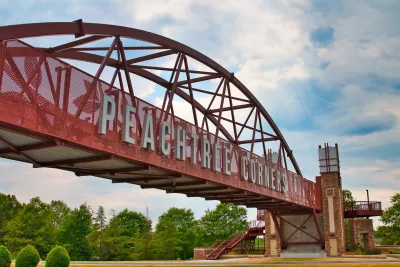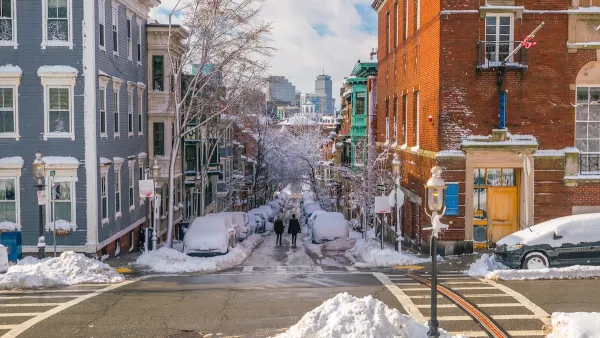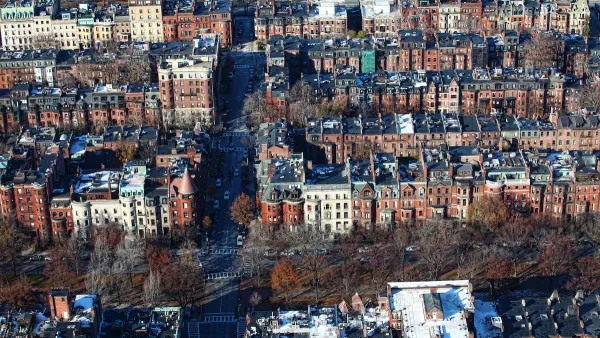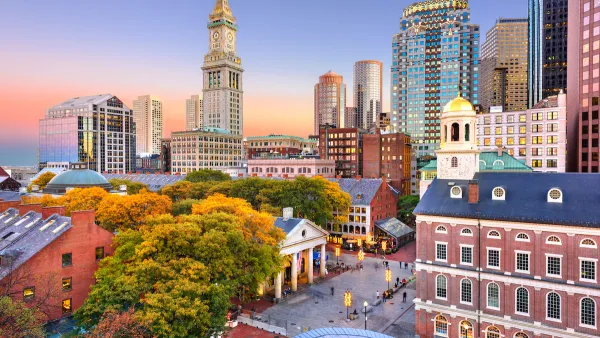Racial segregation in housing is growing and shifting as affluent enclaves form new incorporated cities and options for affordable housing in cities become more limited.

The geography of racial segregation is changing in U.S. cities, according to research by Luisa Godinez-Puig and Sharon Cornelissen for the Joint Center for Housing Studies of Harvard University. “As gentrification and housing unaffordability price lower-income residents out of major cities, we see new racial inequalities emerging on the metropolitan fringe,” they write. Two articles expand on their findings in Atlanta and Boston.
In Atlanta, the creation of new cities, which often occurs in affluent white communities, “can have large impacts on the unincorporated areas they leave behind, which are often communities of color. Indeed, by detaching themselves from county governance, new cities take resources away from the common pool of unincorporated areas and can significantly hurt the economic development of these communities.” Godinez-Puig notes that some predominantly Black communities have also incorporated, in part as a response to other new cities, but that the effects of their incorporation is unclear.
In Boston, the rapidly rising costs of housing are pushing Black families farther out of the city center as “unequal housing choices shape new locations of segregation across metropolitan Boston.” In 2020, the city was ranked 11th most segregated of the top 50 U.S. metros, resulting in disparities in economic and educational opportunities and access to healthcare and jobs. The article asserts that state governments can redress these disparities through preemption laws that promote affordable housing and eliminate exclusionary zoning and a stronger commitment to Affirmatively Furthering Fair Housing and enforcement of the Fair Housing Act.
FULL STORY: The Incorporation of New Cities Has Increased Racial Segregation in Metro Atlanta

National Parks Layoffs Will Cause Communities to Lose Billions
Thousands of essential park workers were laid off this week, just before the busy spring break season.

Retro-silient?: America’s First “Eco-burb,” The Woodlands Turns 50
A master-planned community north of Houston offers lessons on green infrastructure and resilient design, but falls short of its founder’s lofty affordability and walkability goals.

Delivering for America Plan Will Downgrade Mail Service in at Least 49.5 Percent of Zip Codes
Republican and Democrat lawmakers criticize the plan for its disproportionate negative impact on rural communities.

Test News Post 1
This is a summary

Test News Headline 46
Test for the image on the front page.

Balancing Bombs and Butterflies: How the National Guard Protects a Rare Species
The National Guard at Fort Indiantown Gap uses GIS technology and land management strategies to balance military training with conservation efforts, ensuring the survival of the rare eastern regal fritillary butterfly.
Urban Design for Planners 1: Software Tools
This six-course series explores essential urban design concepts using open source software and equips planners with the tools they need to participate fully in the urban design process.
Planning for Universal Design
Learn the tools for implementing Universal Design in planning regulations.
EMC Planning Group, Inc.
Planetizen
Planetizen
Mpact (formerly Rail~Volution)
Great Falls Development Authority, Inc.
HUDs Office of Policy Development and Research
NYU Wagner Graduate School of Public Service





























